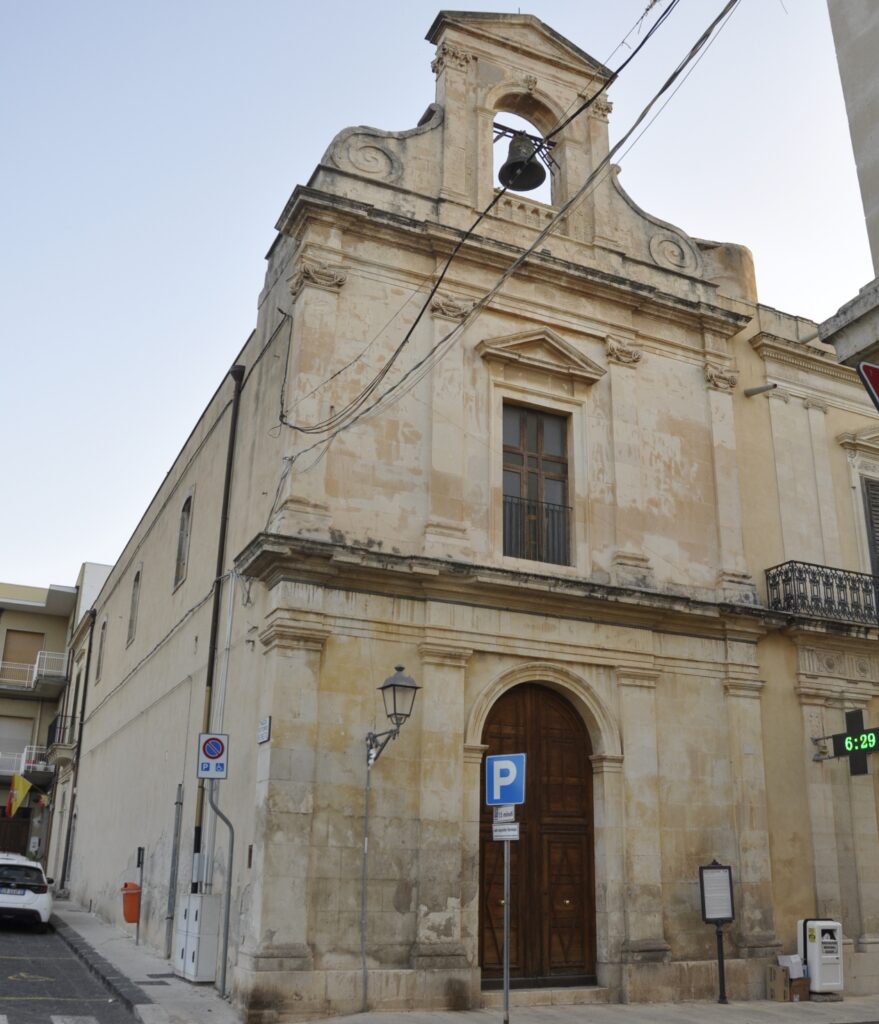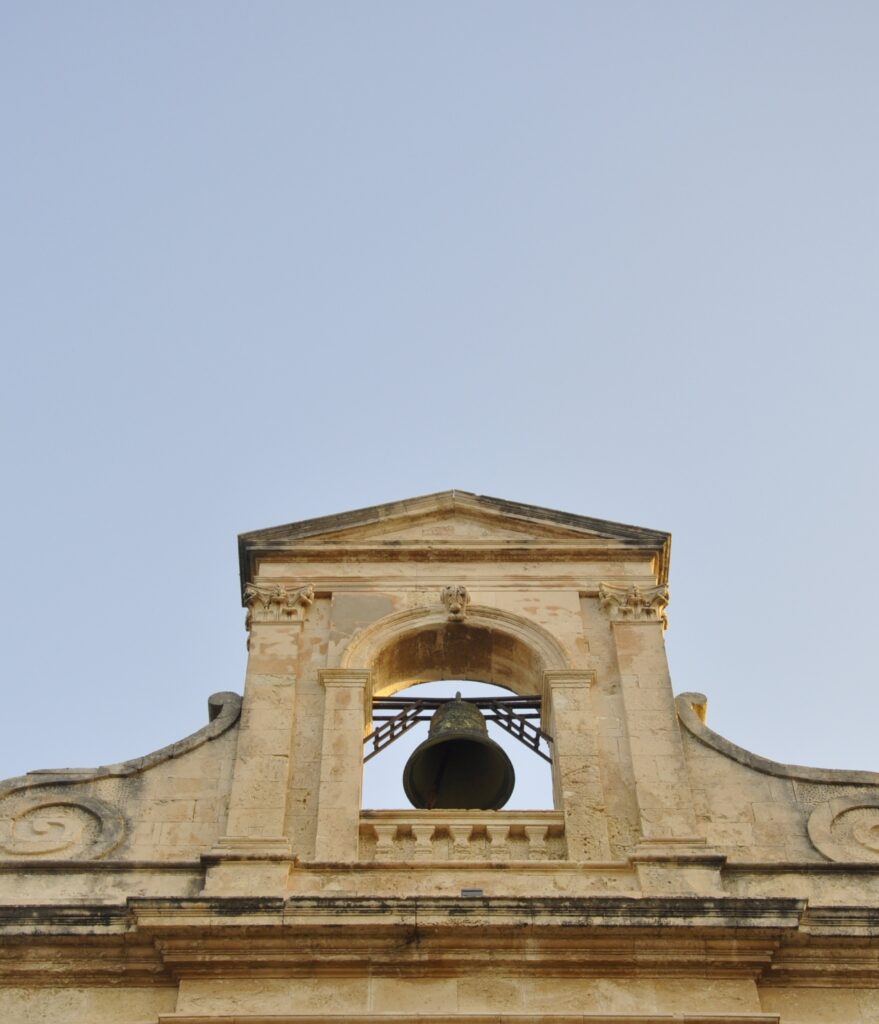Church of St. Anthony of Padua
1703-1705; facade of 19th Century
Closed to the public.

In the city ruined by earthquake damage St. Anthony of Padua initially had a chapel, then a church with a bellchamber started in 1593. It was built in the lane named Grutti Perciati, near the Troncello district overlooking a plain and housing a statue of the saint.
In 1612 the Confraternity of St. Anthony commissioned a statue of the Virgin of Mercy, also known as Our Lady of the Assumption. In addition to taking it in a procession in mid-August, the friars, who wore “a white habit with a moss green cape”, had obtained permission to meet with the statue of the Resurrected Christ from the Church of Saint John the Baptist on Easter Sunday in Piazza della Matrice. This led to the introduction in 1612 of the popular “Pace” religious festival that continued after the new city was built and still takes place today, albeit with different statues.
In the new city the site for the new church was a burial site for many of the victims of the earthquake. The church was built between 1703 and 1705 on the east side of the former Piazza di S. Antonio da Padova (now Piazza Vittorio Veneto) facing the former Strada Corso (now Corso Vittorio Emanuele) adjacent to the palace that in the eighteenth century belonged to the Sirugo-Astuto family, barons of Meti and Santa Domenica.
In 1716 the statue of Our Lady of Mount Carmel was placed in the church. It now adorns the main altar. In 1722 the charity known as the Compagnia della Carità was set up, which organised the Paupers’ Burial ground beneath the church floor. In 1753 the church was merged with the Church of St. Eligius or St. Aloi (the protector of farriers), which had not been rebuilt in the new city, and in 1778 an altar was dedicated to him. In the 1770s the nave was decorated with Rococo stucco decorations.
The church is part of the bishopric and in the 19th century it was further decorated and renovated in the neoclassical style by the owners of the adjacent palazzo. In 1869 Dorotea Sirugo Interlandi, princess of Bellaprima, and her son Pompeo installed the wooden statue of Saint Philomena on the right-hand altar. The other altars have paintings of Our Lady of the Assumption, Saint Liborius and Our Lady of the Assumption. There is an interesting painting of St. Anthony on canvas mounted on wood attributed to the seventeenth century, along with two statues of the saint. The neoclassical façade has Tuscan columns on the first level and Ionic columns on the second. The central entrance has a round arch surmounted by a wide window topped with a pediment. Above this is the bell-chamber linked to the lower part of the facade by scrolls in the baroque style.

Explore the historic center of Avola!
Welcome to Avola, the hexagonal city! Explore the historic center.
Explore the historic center of Avola!
Welcome to Avola, the hexagonal city! Explore the historic center.
